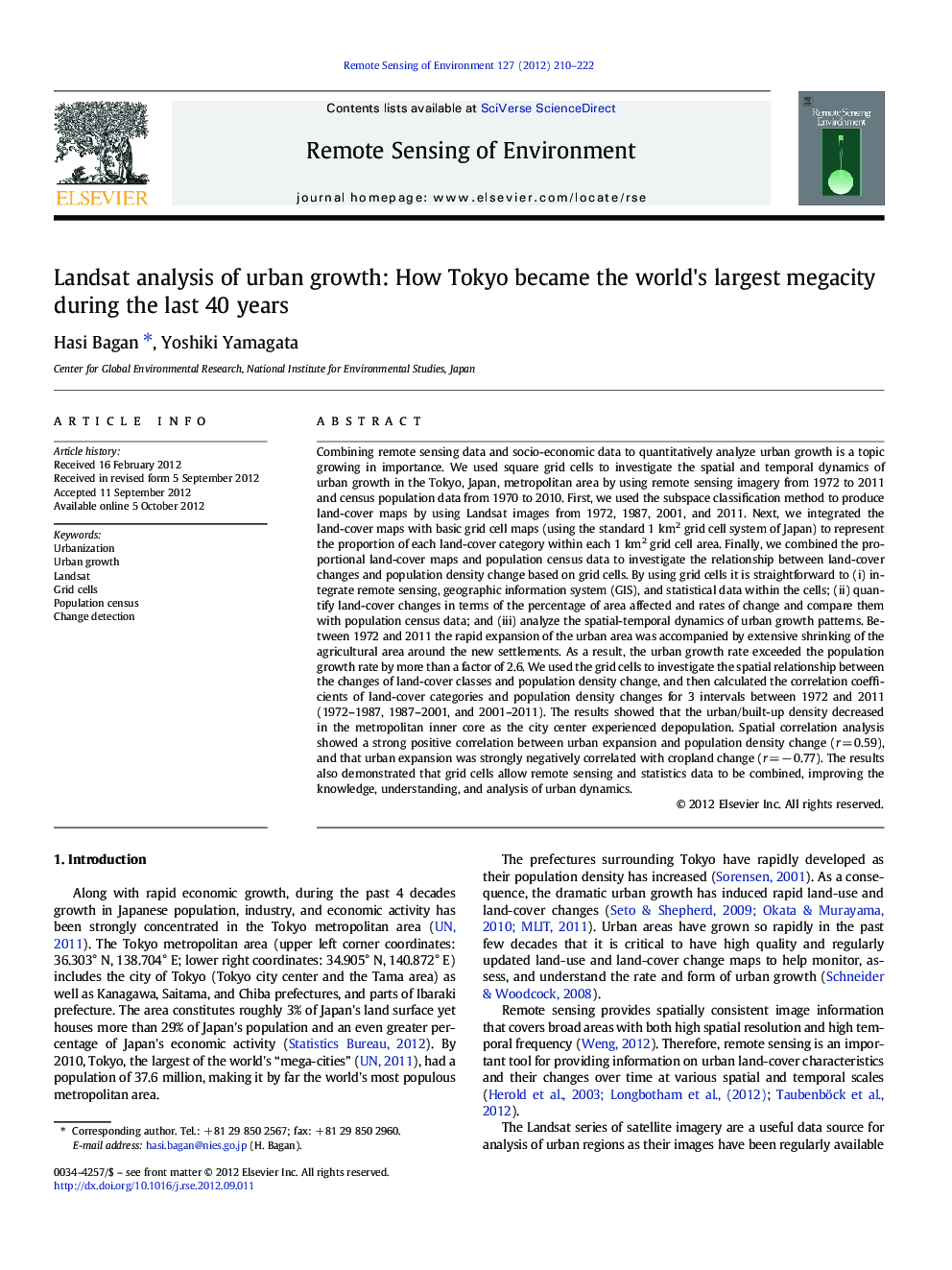| کد مقاله | کد نشریه | سال انتشار | مقاله انگلیسی | نسخه تمام متن |
|---|---|---|---|---|
| 4459098 | 1621273 | 2012 | 13 صفحه PDF | دانلود رایگان |

Combining remote sensing data and socio-economic data to quantitatively analyze urban growth is a topic growing in importance. We used square grid cells to investigate the spatial and temporal dynamics of urban growth in the Tokyo, Japan, metropolitan area by using remote sensing imagery from 1972 to 2011 and census population data from 1970 to 2010. First, we used the subspace classification method to produce land-cover maps by using Landsat images from 1972, 1987, 2001, and 2011. Next, we integrated the land-cover maps with basic grid cell maps (using the standard 1 km2 grid cell system of Japan) to represent the proportion of each land-cover category within each 1 km2 grid cell area. Finally, we combined the proportional land-cover maps and population census data to investigate the relationship between land-cover changes and population density change based on grid cells. By using grid cells it is straightforward to (i) integrate remote sensing, geographic information system (GIS), and statistical data within the cells; (ii) quantify land-cover changes in terms of the percentage of area affected and rates of change and compare them with population census data; and (iii) analyze the spatial-temporal dynamics of urban growth patterns. Between 1972 and 2011 the rapid expansion of the urban area was accompanied by extensive shrinking of the agricultural area around the new settlements. As a result, the urban growth rate exceeded the population growth rate by more than a factor of 2.6. We used the grid cells to investigate the spatial relationship between the changes of land-cover classes and population density change, and then calculated the correlation coefficients of land-cover categories and population density changes for 3 intervals between 1972 and 2011 (1972–1987, 1987–2001, and 2001–2011). The results showed that the urban/built-up density decreased in the metropolitan inner core as the city center experienced depopulation. Spatial correlation analysis showed a strong positive correlation between urban expansion and population density change (r = 0.59), and that urban expansion was strongly negatively correlated with cropland change (r = − 0.77). The results also demonstrated that grid cells allow remote sensing and statistics data to be combined, improving the knowledge, understanding, and analysis of urban dynamics.
► Remote sensing data and census data were integrated in grid cells each with an area of 1 km2.
► Urban expansion has strong correlation with population changes and cropland changes.
► Population and urban/built-up area decreased in the city core during 1972–2011.
Journal: Remote Sensing of Environment - Volume 127, December 2012, Pages 210–222